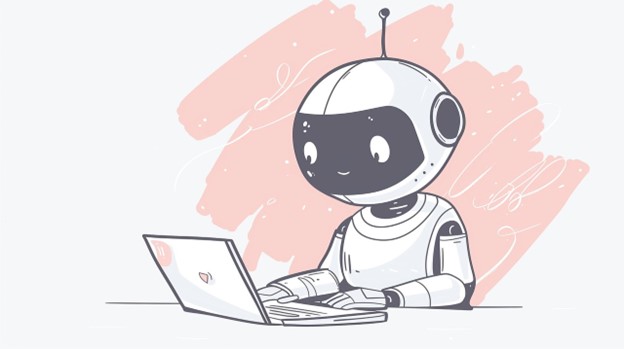Professional communication is essential in every workplace. It helps teams stay aligned, share updates, and make decisions effectively.
In today’s fast-paced environment, professionals often struggle with writing clear and timely messages. Generative AI tools can help bridge that gap. These tools can support better communication through speed, clarity, and personalization.
Table of Contents
Understanding Generative AI in Communication
Generative AI refers to tools that create content based on user input. They can generate emails, messages, reports, and more with the help of machine learning models. These tools often use large language models to understand patterns in language. They can adjust tone, suggest edits, or even create drafts from scratch.
Some AI tools help with grammar and spelling. Others focus on tone and style. They can mimic a company’s voice or adjust for different audiences. These tools are becoming part of everyday work routines. They assist professionals in creating more effective and polished communication.
Practical Use Cases Across Industries
In customer support, AI chatbots can answer common questions. This helps companies respond faster and reduces the burden on support teams. This type of generative AI agent can provide 24/7 support. Customers get answers even when human staff are not available.
In HR, AI helps write job descriptions or onboarding materials. It also assists with drafting internal updates and performance reviews. This allows HR staff to focus on strategy. AI handles repetitive writing tasks with consistency and speed.
Sales teams use AI to draft personalized emails. These emails include key product benefits tailored to each customer. Marketing teams benefit from quick content creation. AI can write social media posts, newsletters, and ad copy based on simple prompts.
Executives use AI to prepare speeches or reports. These tools help organize thoughts and ensure professional wording. Presentation scripts also benefit from AI. They become more engaging and easier to follow for different audiences.
Common Communication Challenges in the Workplace
Employees often face difficulty expressing ideas clearly. Vague messages can lead to confusion and mistakes. Tone is another challenge. A message might seem too strong or too informal, based on the receivers. This could damage relations with colleagues or clients.
Often, many experts waste a lot of time on creating normal emails. Making reports or subsequent communications consumes precious time which can be utilized for other purposes. Global teams may struggle with language barriers. Non-native speakers may worry about grammar or tone. This can reduce confidence and limit contribution.
How Generative AI Tools Help Overcome These Challenges
Generative AI can improve clarity by suggesting simpler words. It can also rewrite sentences to make them more direct and professional. Tone suggestions help users sound more polite or assertive. This makes messages more appropriate for the situation or audience.
AI tools save time by auto-generating responses. Users can input short prompts, and the AI will create full messages or documents. Some tools offer templates for common tasks. This reduces time spent starting from scratch and ensures consistency across messages.
Non-native speakers benefit from grammar corrections. AI tools also highlight awkward phrasing and suggest better alternatives. Some platforms include translation features. These help teams work across languages without confusion.
AI can maintain a consistent tone and voice across the organization. This strengthens the brand’s identity and builds trust with readers. Companies can upload guidelines or tone rules. AI then follows those rules when helping write messages or documents.
Best Practices for Integrating AI Tools Into Professional Communication
Choose an AI tool that matches your company’s needs. Consider the features, cost, and user experience. Look for tools with strong customer support. A simple interface also helps employees adopt the tool more quickly.
Train your employees on how to effectively use the tool. Encourage them to see it as a writing assistant, not a replacement for human thinking. Provide examples and use cases during training. This builds confidence and increases adoption across departments.
Monitor content generated by AI for quality. Human review is still important to catch errors or inappropriate suggestions. Bias can appear in AI-generated content. Teams should stay alert and correct messages that may seem unfair or offensive.
Make sure the tool complies with data privacy rules. Sensitive information should be handled carefully. Read the AI tool’s privacy policy. Ensure it aligns with your company’s standards and local regulations.
Future Outlook
Generative AI tools will keep improving. Future versions may offer real-time feedback as users type. These tools may also understand emotions better. This can help users avoid messages that sound too harsh or too weak. AI could become a coaching tool. It might suggest better ways to phrase difficult conversations.
Collaboration features may also grow. Teams might use shared AI platforms to co-write reports or emails. Ethical use of AI will become more important. Clear guidelines will help companies use these tools responsibly. Human input will remain vital. AI can support communication, but it should not fully replace it.
Final Thoughts
Generative AI tools offer many benefits for professional communication. They improve clarity, speed, and tone. These tools also help teams stay consistent and inclusive. They reduce language barriers and support different communication styles.
Using AI wisely can transform how companies communicate. It helps professionals work more efficiently and connect more clearly. By combining human judgment with smart tools, teams can build better communication habits. This leads to stronger collaboration and better results.

